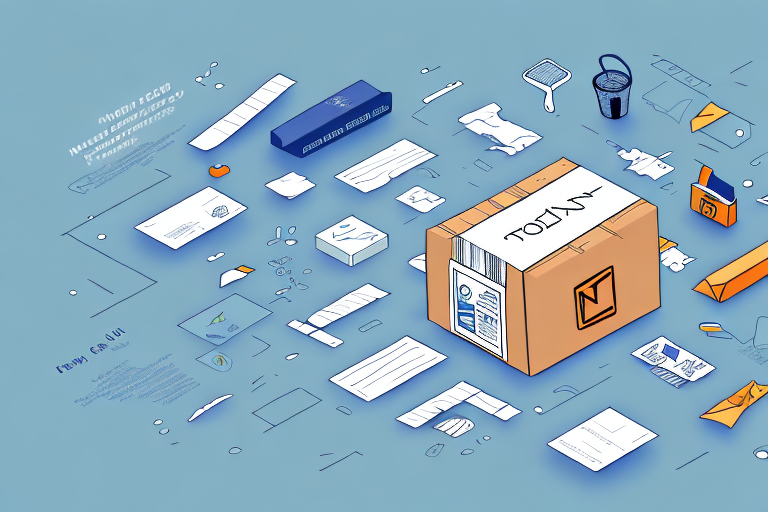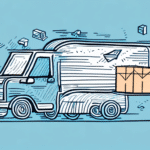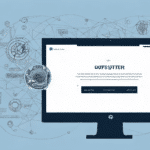Importance of Efficient Deliveries for Businesses
Efficient delivery services are essential for businesses of all sizes to meet customer demands and maintain a competitive edge. According to a Statista report, the third-party delivery market is expected to reach $35.2 billion by 2023, highlighting the growing importance of delivery efficiency.
Enhancing Customer Satisfaction and Loyalty
Prompt and reliable delivery times significantly boost customer satisfaction, leading to repeat business and positive word-of-mouth referrals. A study by Oberlo found that 52% of customers are likely to make a repeat purchase after a positive delivery experience. Fast delivery options can also serve as a unique selling proposition for customers who prioritize speed and convenience.
Operational Cost Reduction
Efficient delivery operations help businesses optimize routes and schedules, reducing fuel consumption and labor costs. According to the Supply Chain Digital, optimizing delivery routes can lead to cost savings of up to 30%. This not only enhances profitability but also allows businesses to allocate resources more effectively.
Competitive Advantage
In a highly competitive market, the ability to deliver products quickly and reliably can distinguish a business from its competitors. The McKinsey & Company emphasizes that operational excellence in deliveries is a key differentiator that can attract and retain customers.
Streamlining Delivery Operations
Optimizing Routes and Schedules
Streamlining delivery operations involves meticulously planning routes and schedules to minimize travel time and maximize efficiency. Utilizing route optimization software can lead to a 20-30% reduction in delivery times, as reported by Geopointe.
Enhancing Visibility and Decision-Making
Increasing visibility into delivery operations allows businesses to make informed decisions in real-time. Implementing delivery management systems provides insights into fleet performance, delivery status, and potential bottlenecks, enabling proactive adjustments. This can lead to improved on-time delivery rates and reduced operational disruptions.
Sustainability Benefits
Streamlined delivery operations contribute to environmental sustainability by reducing the number of vehicles on the road and minimizing fuel consumption. The Environmental Protection Agency notes that optimized delivery routes can significantly lower carbon emissions, aligning business practices with eco-friendly standards.
Enhancing Delivery Efficiency
Identifying and Eliminating Bottlenecks
Analyzing the delivery process to identify bottlenecks is crucial for enhancing efficiency. Tools such as process mapping and performance analytics can help pinpoint delays and inefficiencies, allowing businesses to implement targeted improvements.
Leveraging Technology
Integrating advanced technologies like GPS tracking, automated dispatch systems, and mobile communication tools can streamline delivery operations. These technologies facilitate real-time tracking, enhance coordination among delivery teams, and improve overall operational efficiency.
Implementing Quality Control Measures
Establishing robust quality control protocols ensures that deliveries are accurate and timely. Regular audits, performance monitoring, and feedback loops help maintain high standards and reduce the likelihood of errors in the delivery process.
Effective Communication Strategies
Maintaining clear and consistent communication between delivery teams, customer service, and other stakeholders is vital. Utilizing communication platforms that offer instant messaging, automated notifications, and centralized information sharing can prevent misunderstandings and delays.
Continuous Monitoring and Evaluation
Regularly monitoring key performance indicators (KPIs) and evaluating delivery processes helps identify areas for ongoing improvement. This continuous assessment ensures that delivery operations remain efficient and adaptive to changing business needs.
Leveraging Technology and Data Analytics
Delivery Management Software
Utilizing delivery management software enables businesses to automate and streamline various aspects of the delivery process. Features such as route optimization, real-time tracking, and automated billing enhance operational efficiency and accuracy. For instance, ShipStation offers comprehensive tools for managing deliveries effectively.
Use of Drones and Autonomous Vehicles
The adoption of drones and autonomous vehicles is revolutionizing the delivery industry. These technologies can deliver packages to remote or congested urban areas with increased speed and reduced costs. Companies like Amazon are pioneering the use of drones for faster and more efficient deliveries.
Electric and Hybrid Vehicles
Electric and hybrid delivery vehicles are becoming increasingly popular due to their environmental benefits and cost savings on fuel. According to IEA's Global EV Outlook 2023, the use of electric vehicles in delivery fleets can significantly reduce carbon emissions and operational costs.
Data Analytics for Delivery Optimization
Data analytics plays a pivotal role in optimizing delivery operations by providing insights into customer behavior, delivery performance, and operational costs. Analyzing historical and real-time data allows businesses to forecast demand, optimize inventory management, and personalize customer experiences, thereby enhancing overall efficiency.
Data Analytics in Delivery Optimization
Understanding Customer Behavior
Analyzing customer behavior data helps businesses tailor their delivery services to meet specific needs and preferences. This can lead to improved customer satisfaction and increased loyalty.
Predicting Demand
Data-driven demand forecasting enables businesses to anticipate fluctuations in order volumes, allowing for better resource allocation and inventory management. This reduces the risk of stockouts and ensures timely deliveries.
Reducing Operational Costs
By identifying patterns and inefficiencies within delivery operations, data analytics helps businesses implement cost-saving measures. For example, optimizing delivery routes based on traffic data can reduce fuel consumption and vehicle wear and tear.
Last Mile Delivery Optimization
Challenges and Solutions
The last mile delivery phase, responsible for transporting goods from distribution centers to customers’ doorsteps, is often the most challenging and costly. Common challenges include traffic congestion, high delivery costs, and ensuring timely arrivals. Solutions such as route optimization, local delivery hubs, and the use of alternative delivery methods like bikes or scooters can mitigate these issues.
Customer Satisfaction Strategies
Ensuring customer satisfaction in last mile delivery involves providing accurate delivery estimates, offering flexible delivery options, and maintaining transparent communication. Real-time tracking and proactive notifications help manage customer expectations and enhance the delivery experience.
Cost Minimization Strategies
Optimizing Routes
Efficient route planning minimizes travel distance and time, leading to significant cost savings. Tools like Route4Me offer advanced route optimization features that help businesses reduce fuel consumption and labor costs.
Investing in Fuel-Efficient Vehicles
Transitioning to fuel-efficient or electric delivery vehicles can substantially lower fuel costs and reduce the environmental impact. This investment not only leads to long-term savings but also aligns with sustainable business practices.
Partnerships and Combined Deliveries
Collaborating with other local businesses to offer combined delivery services can spread costs and reduce the number of trips required. This strategy enhances delivery efficiency and lowers overall operational expenses.
Implementing Cost Tracking Tools
Using cost tracking and monitoring tools allows businesses to identify areas where expenses can be reduced. By analyzing cost data, companies can implement targeted strategies to improve financial efficiency.
Reducing Lost or Damaged Shipments
Implementing robust handling and tracking systems minimizes the risk of lost or damaged shipments, reducing the costs associated with replacements and customer dissatisfaction.
Managing Delivery Teams
Training and Support
Providing comprehensive training programs ensures that delivery teams have the necessary skills and knowledge to perform their duties efficiently. This includes training on safe driving practices, customer service, and problem-solving techniques.
Communication and Feedback
Encouraging open communication and regular feedback between delivery teams and management fosters a collaborative environment. This helps in identifying issues early and implementing effective solutions swiftly.
Performance Metrics and Rewards
Establishing clear performance metrics allows businesses to monitor delivery team performance objectively. Recognizing and rewarding high-performing teams motivates employees and enhances overall productivity.
Providing the Right Tools and Technology
Equipping delivery teams with the latest tools and technology, such as mobile devices and delivery management software, enhances their efficiency and accuracy in performing deliveries.
Innovations and Future Trends in Delivery Services
Autonomous Vehicles and Robotics
The integration of autonomous vehicles and robotics is set to transform the delivery landscape. These technologies promise increased efficiency, reduced labor costs, and enhanced delivery speed. Companies like Waymo are at the forefront of developing autonomous delivery solutions.
Drone Deliveries
Drones offer a rapid and cost-effective method for delivering packages, especially in remote or hard-to-reach areas. Regulatory advancements and technological improvements are making drone deliveries more feasible and widespread.
Sustainable Delivery Practices
The future of delivery services emphasizes sustainability through the use of electric vehicles, eco-friendly packaging, and optimized delivery routes. These practices not only reduce environmental impact but also appeal to environmentally-conscious consumers.
AI and Machine Learning
Artificial Intelligence (AI) and machine learning are enhancing delivery optimization by enabling predictive analytics, improving route planning, and automating various aspects of the delivery process. This leads to more efficient and intelligent delivery operations.
Case Studies: Success Stories from Companies that Maximized Efficiency with Delivery Services
Amazon's Prime Delivery
Amazon has revolutionized delivery efficiency through its Prime service, offering same-day and next-day deliveries. By leveraging advanced logistics, automation, and a vast network of distribution centers, Amazon ensures fast and reliable delivery to millions of customers worldwide.
FedEx's Route Optimization
FedEx implemented advanced route optimization algorithms to enhance their delivery efficiency. This initiative resulted in a 15% reduction in fuel consumption and a 20% improvement in on-time delivery rates, demonstrating the significant impact of technology-driven optimization.
UPS's ORION System
UPS developed the On-Road Integrated Optimization and Navigation (ORION) system, which uses data analytics to determine the most efficient delivery routes. This system has saved UPS over 100 million miles driven and reduced fuel consumption by millions of gallons annually.
Conclusion
Optimizing the delivery process is paramount for businesses aiming to stay profitable and competitive in today's fast-paced market. By streamlining delivery operations, leveraging advanced technologies, and fostering effective communication, businesses can significantly reduce delivery times, enhance accuracy, and minimize operational costs. Embracing innovations such as autonomous vehicles, drones, and data analytics will further propel delivery efficiency, ensuring that businesses can meet evolving customer expectations and maintain a strong market presence. As the delivery landscape continues to evolve, staying informed about the latest trends and best practices will be crucial for sustained success.




















